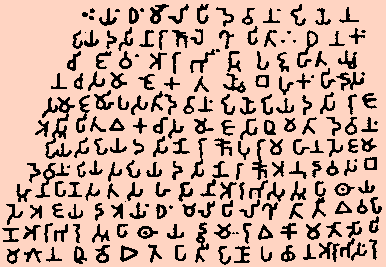The “Edicts of Ashoka” refer to the stone testaments made by King Ashoka, the Mauryan leader who declared an end to war and violence and embraced the principles of Buddhism after his ruthless conquest of the Kalinga Kingdom.
The edicts are composed of 33 sacred inscriptions on stones that are located in caves, boulders, and in the so-called “Pillars of Ashoka.” These pillars refer to the columns in temples typical in northern ancient India. Today, only 10 of these pillars with Edicts of Ashoka visibly inscribed have been recovered and re-erected in Delhi, Allahabad, Rampurva, and Sarnath, among other selected places.
 The stone edicts were dated back to 272 to 231 BC. Most of them were found around Dhauli, the site of the bloody Kalinga War, to as far as the northern Indian territories and in Pakistan.
The stone edicts were dated back to 272 to 231 BC. Most of them were found around Dhauli, the site of the bloody Kalinga War, to as far as the northern Indian territories and in Pakistan.
The Edicts of Ashoka were the “declarations of truth” that Ashoka realized and passed on to his subjects. The truth centered on “Dharma,” the Buddhism concept of peace. Ashoka declared that the “Victory of Dharma is the noblest victory of all,” thereby renouncing war in all its forms.
Likewise, Ashoka’s edicts focused on moral and social precepts like “All people should live a life of truthfulness, justice and love,” “All religions preach the same virtue,” and “Give charity,” among others.
In his edicts, Akosha referred to himself as the “Beloved of the Gods” and “King Priyadarshi,” an attribution which baffled many historians for centuries but was rightfully accorded to Ashoka in 1915,  centuries after his death, when an excavated stone revealed inscriptions of his name with the grand title Priyadarshi. The Edicts of Ashoka are credited in part for the promotion of Buddhism beliefs and principles as far as the Mediterranean.
centuries after his death, when an excavated stone revealed inscriptions of his name with the grand title Priyadarshi. The Edicts of Ashoka are credited in part for the promotion of Buddhism beliefs and principles as far as the Mediterranean.